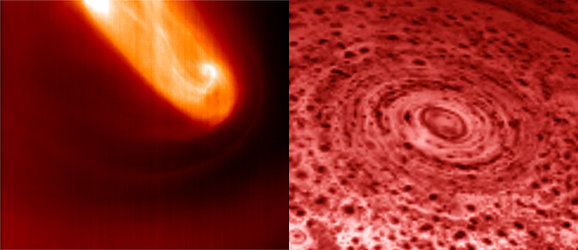Accept all cookies Accept only essential cookies See our Cookie Notice

About ESA
The European Space Agency (ESA) is Europe’s gateway to space. Its mission is to shape the development of Europe’s space capability and ensure that investment in space continues to deliver benefits to the citizens of Europe and the world.
Highlights
ESA - United space in Europe
This is ESA ESA facts Member States & Cooperating States Funding Director General Top management For Member State Delegations European vision European Space Policy ESA & EU Space Councils Responsibility & Sustainability Annual Report Calendar of meetings Corporate newsEstablishments & sites
ESA Headquarters ESA ESTEC ESA ESOC ESA ESRIN ESA EAC ESA ESAC Europe's Spaceport ESA ESEC ESA ECSAT Brussels Office Washington OfficeWorking with ESA
Business with ESA ESA Commercialisation Gateway Law at ESA Careers Cyber resilience at ESA IT at ESA Newsroom Partnerships Merchandising Licence Education Open Space Innovation Platform Integrity and Reporting Administrative Tribunal Health and SafetyMore about ESA
History ESA Historical Archives Exhibitions Publications Art & Culture ESA Merchandise Kids Diversity ESA Brand CentreLatest
Space in Member States
Find out more about space activities in our 23 Member States, and understand how ESA works together with their national agencies, institutions and organisations.
Science & Exploration
Exploring our Solar System and unlocking the secrets of the Universe
Go to topicAstronauts
Missions
Juice Euclid Webb Solar Orbiter BepiColombo Gaia ExoMars Cheops Exoplanet missions More missionsActivities
International Space Station Orion service module Gateway Concordia Caves & Pangaea BenefitsLatest
Space Safety
Protecting life and infrastructure on Earth and in orbit
Go to topicAsteroids
Asteroids and Planetary Defence Asteroid danger explained Flyeye telescope: asteroid detection Hera mission: asteroid deflection Near-Earth Object Coordination CentreSpace junk
About space debris Space debris by the numbers Space Environment Report In space refuelling, refurbishing and removingSafety from space
Clean Space ecodesign Zero Debris Technologies Space for Earth Supporting Sustainable DevelopmentLatest
Applications
Using space to benefit citizens and meet future challenges on Earth
Go to topicObserving the Earth
Observing the Earth Future EO Copernicus Meteorology Space for our climate Satellite missionsCommercialisation
ESA Commercialisation Gateway Open Space Innovation Platform Business Incubation ESA Space SolutionsLatest
Enabling & Support
Making space accessible and developing the technologies for the future
Go to topicBuilding missions
Space Engineering and Technology Test centre Laboratories Concurrent Design Facility Preparing for the future Shaping the Future Discovery and Preparation Advanced Concepts TeamSpace transportation
Space Transportation Ariane Vega Space Rider Future space transportation Boost! Europe's Spaceport Launches from Europe's Spaceport from 2012Latest

Close-up view over Venus south polar vortex
Thank you for liking
You have already liked this page, you can only like it once!
This triple image provides a close-up view of the double-eyed vortex at Venus south pole, as seen by the Ultraviolet/Visible/Near-Infrared spectrometer (VIRTIS) on board ESA’s Venus Express. The images were taken on 29 May 2006, from a distance of about 64 000 kilometres from the planet. All the separate images can be downloaded here:
- South
polar_vortex close up_1_b.gif
- South
polar_vortex close up_1_b.tif
- South
polar_vortex close up_3_b.tif
- South
polar_vortex close up_2_b.tif
The vortex is imaged at different infrared wavelengths, corresponding to different atmospheric depths. The left image (taken at 5.05 microns) correspond to an atmospheric altitude of about 59 kilometres, just about the Venusian cloud deck. The central image (taken at 4.65 microns) corresponds to an atmospheric altitude of about 60 kilometres. The right image (taken at 4.08 microns) corresponds to an altitude of about 65 kilometres, just in the upper clouds. The images were taken with a 20º inclination with respect to vertical pointing.
The brighter the colour, the more radiation is reaching out from the hot layers below. The brightest spot correspond to the centre of the vortex, where radiation from the deeper layers become clearly visible , like looking through a hole.
The dark circular structures surrounding the brighter area belong to the big vortex structure (bottom of the images) - as large as a big portion of Europe (2500 kilometres across) - and are part of the planet atmospheric super-rotation. The left image also clearly shows a complex structure, where many more small structures are visible.
-
CREDIT
ESA/VIRTIS/INAF-IASF/Obs. de Paris-LESIA -
LICENCE
ESA Standard Licence

Close-up view of south polar vortex (video)

Terrific south polar vortex

Venus south polar vortex at night

Venus's polar vortex















 Germany
Germany
 Austria
Austria
 Belgium
Belgium
 Denmark
Denmark
 Spain
Spain
 Estonia
Estonia
 Finland
Finland
 France
France
 Greece
Greece
 Hungary
Hungary
 Ireland
Ireland
 Italy
Italy
 Luxembourg
Luxembourg
 Norway
Norway
 The Netherlands
The Netherlands
 Poland
Poland
 Portugal
Portugal
 Czechia
Czechia
 Romania
Romania
 United Kingdom
United Kingdom
 Slovenia
Slovenia
 Sweden
Sweden
 Switzerland
Switzerland























